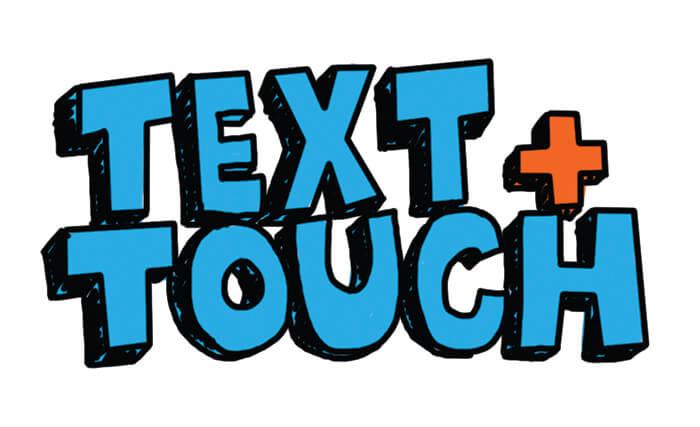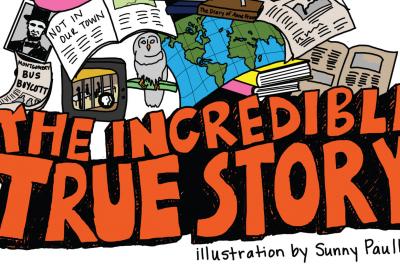Jamie Highfill, an eighth-grade English teacher in Fayetteville, Ark., recently got the message from her administration: Make room for more informational texts. Highfill dropped her beloved poetry unit—and she wasn’t happy about it. “With informational text, there isn’t that human connection that you get with literature,” she told The Washington Post.
She’s not alone, either. As the majority of school districts in the United States ramp up to implement the Common Core State Standards fully by 2014, some teachers are reluctant to make the shift toward more informational reading. But nonfiction isn’t just government documents and textbooks. It’s an opportunity for teachers to explore texts that mirror their students’ experiences, as well as those that offer a window into other people’s lives and perspectives.
Textbooks Are Just the Beginning

Many teachers are unfamiliar with the variety of nonfiction texts available. Kristin Patrick, an elementary media specialist for Hamilton Southeastern Schools in Indiana, feels one of her primary roles during the transition to CCSS will be to work with teachers to broaden their perception of nonfiction and help them stretch beyond the factual writing found in textbooks.
The CCSS includes everything from picture books to government documents in its suggested reading list, and these exemplar texts are just that—examples. Educators have complete freedom to explore further. Patrick says teachers, administrators and even students have a lot of opportunity to discover what’s out there.
Literary nonfiction is a great example, says Patrick. “Think about how much more engaging that type of book will be than the textbook is for students. Plus, they’ll be learning so much more than just ‘what happened.’ I think once teachers start getting into this new way of thinking, they’ll begin to get a better understanding of the potential out there.”
The trick, she says, is for teachers and students to be thoughtful in their text selections and to understand that informational reading takes many different forms, all of which can contribute to a more flexible and authentic curriculum.
Sample Informational Texts from the Perspectives Library
Grades K-2
Families
by Ann Morris
This book’s photos of families living and working around the world will get students thinking about their own families and those of children on the other side of the globe.
Grades 3-5
Zack’s Story
by Keith Elliot Greenberg
Zack’s Story—another book told in real-life photographs—is narrated by 11-year-old Zack, who tells readers about living with his mother and his “second” mother while maintaining a relationship with his father.
Grades 6-8
“Not in Our Town”
by Claire Safran
Originally printed in Redbook in 1994, “Not in Our Town” documents a series of hate crimes that occurred in the early 1990s in Billings, Mont., and the city’s efforts to build a community through mutual respect.
Grades 9-12
Covering: The Hidden Assault on Our Civil Rights by Kenji Yoshino
Excerpts from this memoir detail the author’s struggles to downplay his Asian heritage and homosexuality to gain acceptance in the dominant society.
Culturally Responsive Nonfiction
Molly Vasich, a high school English teacher from Minneapolis, Minn., learned firsthand how infusing various types of nonfiction into her class can bring cultural relevance to assignments.
“There’s a lot of room in nonfiction to talk about where we are in terms of culture and what our society values,” Vasich says. For instance, one of her learning units focuses on the biography Zeitoun by Dave Eggers. Zeitoun recounts the story of Abdulrahman Zeitoun, a Syrian resident of New Orleans who spent 23 days in jail after being arrested on his own property in the days following Hurricane Katrina. During his imprisonment, Zeitoun was denied medical care and the right to notify his wife of his whereabouts.
Vasich helps students expose the layers of the text—the experience of Muslims in the post-9/11 United States, incarceration inequalities, immigration and the realities of being a minority in New Orleans. She says, “We read articles and watch segments of documentaries and news stories about the prison system in New Orleans and the lives of perceived ‘outsiders’ during Hurricane Katrina, which always lead to discussions on race and media.”
Students watch video segments about the hurricane from Frontline and National Geographic, as well as excerpts from Katrina-themed documentaries. They read texts from various news sources, including the Huffington Post, PBS NewsHour and National Guard magazine.
Using everyday mediums to support student learning about Katrina’s aftermath allows students to begin making connections between what occurred then and what is important in their own lives. Such personal connections to the text, says Vasich, often lead to discussions about social justice and, ultimately, to new levels of understanding about what it means to be culturally aware.
Vasich adds that an additional perk to using culturally responsive nonfiction texts in her classroom is that her students develop a new appreciation for personal narratives. “Reading nonfiction texts gives voice to people who might not be heard otherwise, and I think it reminds my students that they, too, have stories to tell.”
Kristin Patrick agrees. “When [students] are reading nonfiction, especially online, I see engagement go way up. And especially when we’re reading about other people’s lives, the students are always with me, making connections or wanting to know more.” The push for increased nonfiction also allows students to read about protagonists who look and act like them, she says. It’s an opportunity for students to examine their own lives. “I believe every kid deserves the chance to see his or her own face in the pages of a book and think: ‘Who am I going to be?’”
Opportunities for Collaboration
From an interdisciplinary standpoint, Patrick believes the push for nonfiction will provide exciting opportunities for teachers to collaborate across grade levels and subject areas.
“Right now, I feel like teachers are getting mixed messages from administrators,” says Patrick. “On one hand, they are hearing, ‘collaborate, collaborate, collaborate.’ On the other hand, there is so much pressure to be [in] lock step with your school and district mandates. How are teachers supposed to navigate those two forces?”
The CCSS may be the key to resolving that tension, says Patrick. “Teachers in all subject areas are going to have to engage students on new levels, especially when it comes to reading and research skills, which means we’re going to have to get past ‘what’s going [on] in the social studies hallway’ and work together.”
Shifting Perspectives
As teachers begin to select informational texts for use in their classrooms, they have an opportunity to embed more culturally responsive materials into their lessons. Teaching Tolerance wants to help teachers take advantage of that opportunity, which is why they’ve created Perspectives for a Diverse America: A K-12 Literacy-based Anti-bias Curriculum.
Designed using the CCSS guidelines for informational text length and complexity and developed through the lens of the Teaching Tolerance Standards for Anti-bias Education, Perspectives for a Diverse America includes informational and literary nonfiction texts, as well as visual and multimedia/performed texts that complement curricula across subject areas and grade levels.
“The Common Core is a potential entry point for equity across diverse classrooms,” says Emily Chiariello, teaching and learning specialist for Teaching Tolerance. “But for that potential to become real, teachers must take an inclusive and culturally responsive approach toward implementation and instruction.”

CCSS and Implementation: True or False?
1. Informational texts are only textbook selections or other dry, factual reading material.
FALSE. Informational texts, as defined by the CCSS guidelines, include literary nonfiction as well as a wealth of expository, argumentative, persuasive and procedural texts.
2. I already teach a lot of nonfiction, so I can just continue to deliver content the way I always have.
FALSE. Teachers need to re-examine what they are already teaching through the lens of the CCSS guidelines for complexity, quality and range to ascertain whether their current course offerings are appropriate.
3. CCSS exemplar texts are required.
FALSE. Teachers are encouraged to select custom texts to fit their curricula based on their interpretations of the CCSS guidelines for complexity, quality and range. The Perspectives for a Diverse America anthology is a great place to start—all included texts meet CCSS complexity requirements.
4. I am committed to teaching social justice and inquiry, but after CCSS implementation, I won’t have time for culturally responsive teaching.
FALSE. The broad CCSS definition of informational texts gives teachers the opportunity to introduce even more culturally relevant texts into their curricula.

